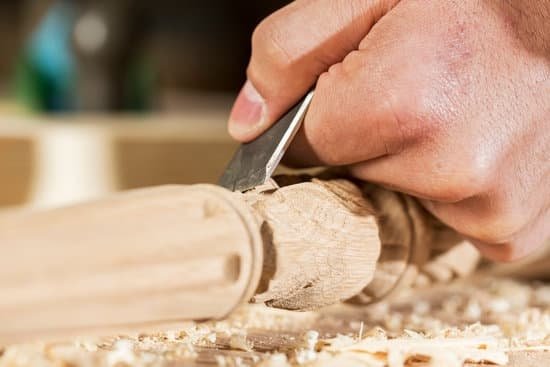Woodworking is a centuries-old craft that involves the shaping, cutting, and carving of wood to create functional and decorative objects. From furniture to sculptures, woodworking offers endless possibilities for creativity and craftsmanship. However, to embark on a successful woodworking journey, it is crucial to understand the basic tools used in this craft. One such tool that plays a vital role in woodworking is the lathe.
A lathe is a versatile machine that has been used for centuries by woodworkers to transform raw wood into intricate designs. This article aims to provide a comprehensive understanding of what a lathe is and its significance in woodworking. Whether you are a beginner or an experienced woodworker, gaining insight into this essential tool will enhance your skills and broaden your creative horizons.
In this article, we will explore the evolution of the lathe in woodworking, from traditional methods to modern techniques. We will also delve into the various components that make up a lathe and how they contribute to effective woodworking. Additionally, we will discuss the purpose and function of a lathe in this craft – how it transforms wood into art – as well as the different types of lathes available for every woodworker’s needs.
By the end of this article, you will have gained valuable knowledge about using a lathe in woodworking and be equipped with expert insights on maximizing its potential. So let’s embark on this journey together, embracing the versatility of a lathe and expanding our woodworking skills and creativity.
Understanding the Role of Lathe in Woodworking
A lathe is a fundamental tool in the field of woodworking, playing a crucial role in shaping wood into various forms and designs. It is a machine that rotates a workpiece on its axis, allowing the woodworker to shape it symmetrically. The lathe consists of several key components, including the headstock, tailstock, bed, tool rest, and spindle. These parts work together to enable precision and control in the woodworking process.
The primary function of a lathe is to create round objects such as bowls, vases, chair legs, and table legs. Woodworkers can also use it to produce more intricate and complex shapes by utilizing specialized attachments and techniques. When operated correctly with proper techniques and tools, a lathe can transform a simple piece of wood into a work of art.
One of the main advantages of using a lathe in woodworking is its ability to create symmetrical shapes quickly and accurately. By securing the workpiece between the headstock and tailstock and rotating it continuously, the woodworker can utilize various cutting tools to remove excess material and shape the wood according to their desired design. This process allows for precise control over details such as curves, contours, tapers, beads, coves, and flutes.
To showcase the significance of a lathe in woodworking further, here are some useful statistics:
– According to a market research report by Grand View Research Inc., the global woodworking machinery market size was valued at $4.3 billion in 2020.
– The same report projected that this market is expected to register a CAGR of 3.7% from 2021 to 2028.
– In terms of product type within woodworking machinery, lathes are among the popular machines used globally due to their versatility.
The Evolution of Lathe in Woodworking
Woodworking is an ancient craft that has been practiced for centuries. It involves shaping and manipulating wood to create functional or decorative items. Throughout history, the tools used in woodworking have evolved, and one important tool that has seen significant advancements is the lathe.
In its simplest form, a lathe is a machine that rotates a piece of wood while a cutting tool shapes it. The lathe has played a crucial role in woodworking since ancient times, with evidence dating back to ancient Egypt and Greece. These early lathes were operated manually by craftsmen who would turn the wood by hand while using their tools to shape it.
As technology advanced, so did the design and capabilities of lathes. In the 18th century, foot-powered lathes were introduced, allowing craftsmen to use both hands to manipulate the wood while controlling the rotation with their feet. This innovation greatly increased efficiency and precision in woodworking.
The Industrial Revolution brought about further advancements in lathe technology. The introduction of steam power allowed for larger and more powerful lathes to be developed. The turning process became mechanized, reducing the physical effort required from craftsmen and enabling mass production of turned wood products.
In recent years, modern techniques such as computer numerical control (CNC) have revolutionized woodworking with lathes. CNC lathes are automated machines that use computer programming to control the movement of cutting tools. This technology allows for highly precise and complex designs to be created with ease.
Overall, the evolution of the lathe in woodworking shows how craftsmanship has been enhanced by advancements in technology. From manual operation to steam power and CNC automation, each stage has contributed to making woodworking more efficient and accessible. Today’s woodworkers have access to a wide range of lathe options, from traditional hand-operated models to high-tech CNC machines, giving them endless possibilities for creativity and innovation in their woodworking projects.
Exploring the Components of a Lathe
A lathe is a fundamental tool in woodworking that allows craftsmen to shape wood into various forms and designs. To effectively utilize a lathe, it is essential to have a thorough understanding of its components and their functions. By familiarizing yourself with the anatomy of a lathe, you can have better control over the machine and produce high-quality woodworking projects.
One of the main components of a lathe is the bed, which provides a solid and stable base for the entire machine. The size and length of the bed determine the maximum size of wood that can be turned on the lathe. The headstock is another crucial component that holds the spindle, which rotates the workpiece. It also houses various gears that allow you to control the speed at which the workpiece spins.
The tailstock is located at the opposite end of the lathe from the headstock and acts as support for longer workpieces. It can be moved along the bed to adjust for different lengths of wood. The tailstock also contains a quill, which can be extended or retracted to hold the workpiece securely in place.
Another vital component is the tool rest, which is positioned between the headstock and tailstock. The tool rest provides support for cutting tools while they are in use. It can be adjusted in height and distance from the workpiece to accommodate different shapes and sizes.
In addition to these major components, there are other smaller parts that contribute to an effective woodworking experience with a lathe. These include:
– Chuck: A device used for holding a workpiece securely in place.
– Drive center: Inserts into one end of the workpiece to rotate it during turning.
– Live center: Supports one end of longer workpieces between centers.
– Faceplate: Attaches to one end of larger or irregularly shaped workpieces for secure mounting.
By understanding these components and their functions, you will be well-equipped to utilize a lathe effectively and achieve precise and detailed woodworking results.
The Purpose and Function of a Lathe in Woodworking
A lathe is a vital tool in woodworking that plays a crucial role in transforming raw pieces of wood into beautiful works of art. Whether you are a beginner or an experienced woodworker, understanding the purpose and function of a lathe is essential for mastering this craft.
At its core, the purpose of a lathe in woodworking is to shape and smooth wooden objects with precision. The main function of a lathe is to rotate the piece of wood on its axis while stationary cutting tools shape and carve it. This rotation allows the craftsman to create symmetrical designs and intricate details that would be difficult to achieve by hand.
One of the key functions of a lathe is turning, which involves spinning the wood blank against cutting tools to shape it into various forms such as bowls, spindles, pens, or decorative items. These turned objects can then be further enhanced with carving techniques or embellishments to create unique and personalized pieces.
To achieve these transformations, a lathe consists of several components that work together seamlessly. These include the headstock, which holds the rotating spindle and provides power to turn the wood; the tailstock, which supports one end of the wood blank; and the tool rest, where various cutting tools are secured during woodworking.
In addition to shaping and carving wood, a lathe also enables woodworkers to refine their craftsmanship by allowing them to experiment with different materials such as exotic woods and acrylics. By understanding how each component operates and taking advantage of its versatility, craftsmen can push their creative boundaries beyond traditional boundaries.
Types of Lathe for Woodworking
The lathe is an essential tool in woodworking, allowing craftsmen to shape wood into various forms and create intricate designs. There are different types of lathes available, each with its own unique features and capabilities. Understanding the different types of lathes can help woodworkers choose the one that best suits their needs and preferences.
One common type of lathe is the benchtop lathe. As the name suggests, it is designed to be placed on top of a workbench or table. Benchtop lathes are smaller in size, making them portable and ideal for small woodworking projects. They are suitable for beginners or hobbyists who have limited space but still want to enjoy the benefits of a lathe.
Floor-standing lathes, on the other hand, are larger and more robust than benchtop lathes. They are often more powerful and capable of handling larger pieces of wood. Floor-standing lathes are commonly used in professional workshops or by experienced woodworkers who work on larger projects such as furniture or architectural elements.
Another popular type is the mini-lathe, which is even smaller than a benchtop lathe. Mini-lathes are compact and lightweight, making them highly portable and perfect for those who frequently move their workspace or travel to craft shows or fairs. Despite their small size, mini-lathes can still produce quality results and are suitable for small-scale turning projects.
There are also specialized lathes such as bowl lathes, pen-turning lathes, metal lathes, and CNC (Computer Numerical Control) lathes that serve specific purposes within woodworking. Bowl lathes, for example, have a unique design that allows craftsmen to turn bowls with hollow interiors. Pen-turning lathes are specifically designed for creating pens or similar small and delicate items.
Metal lathes, as the name suggests, are used for turning metal instead of wood. CNC lathes are computer-controlled and highly automated, allowing for precise and complex designs.
Step-by-Step Guide on How to Use a Lathe for Woodworking
Using a lathe for woodworking requires a step-by-step process to ensure safety and effectively master techniques. Whether you are a beginner or an experienced woodworker, following proper procedures is crucial for a successful woodworking project. This section will provide a comprehensive guide on how to use a lathe for woodworking, covering safety precautions, setting up the lathe, and mastering various techniques.
Safety Precautions
Before using a lathe, it is important to prioritize your safety. Follow these essential safety precautions:
- Wear appropriate protective gear, including safety glasses or goggles, ear protection, and a dust mask.
- Keep your work area clean and organized to prevent accidents.
- Avoid wearing loose clothing or jewelry that could get caught in the lathe.
- Ensure that the lathe is properly grounded to avoid electrical hazards.
- Always disconnect the lathe from the power source when making adjustments or changing tools.
Setting Up the Lathe
Once you have taken the necessary safety precautions, it’s time to set up your lathe for woodworking. Follow these steps:
- Select an appropriate location for your lathe. It should be in a well-ventilated area with enough space for you to move around comfortably.
- Securely anchor the lathe to a sturdy workbench or stand to prevent vibrations during operation.
- Ensure that the lathe is level and stable before using it.
- Check that all attachments and accessories are properly installed and tightened.
Mastering Techniques
To achieve precision in your woodworking projects, it is important to master various techniques when using a lathe. Here are some key techniques to focus on:
- Spindle Turning: This technique involves shaping cylindrical objects, such as table legs or chair spindles.
- Bowl Turning: Bowl turning allows you to transform a block of wood into a curved bowl shape.
- Parting Off: Parting off is the process of separating the finished workpiece from the remaining stock using a parting tool.
- Faceplate Turning: Faceplate turning is used when working with irregularly shaped items, such as wooden bowls or platters.
- Sanding and Finishing: Proper sanding and finishing techniques are essential to achieve a smooth and polished final product.
By following these step-by-step guidelines, you can safely use a lathe for woodworking and master various techniques to create beautiful and intricate wood pieces. Remember to always prioritize safety and take your time to practice and improve your skills.
Common projects Made Possible with a Lathe
Woodworking offers a wide range of possibilities for creative expression, and using a lathe is an excellent way to unleash your creativity. With the help of a lathe, woodworkers can create a variety of projects that showcase their skills and artistry. This section will explore some common projects that are made possible with a lathe, proving its versatility in woodworking.
Bowls and Vessels
One of the most common projects made possible with a lathe is turning bowls and vessels. With a lathe, you can transform a block of wood into a beautiful bowl or vase, showcasing the natural beauty of the wood grain. By carefully shaping and hollowing out the wood, you can create functional and artistic pieces that make a statement in any room.
Spindles and Furniture Parts
A lathe is also essential for creating spindles and various parts for furniture. Whether it’s chair legs, table legs, or stair balusters, a lathe allows you to turn these components with precision and consistency. By using different tools and techniques on the lathe, you can achieve intricate designs and patterns on these wooden parts, adding visual interest to your furniture projects.
Pens and Writing Instruments
Another popular project made possible with a lathe is turning pens and other writing instruments. Using small pieces of wood or acrylic blanks, you can create unique pens with personalized designs. This is a great project for beginners as it allows them to practice various techniques while producing functional items.
Artistic Sculptures
For those looking to push their artistic boundaries in woodworking, a lathe offers endless possibilities for creating sculptures. From abstract forms to detailed figurines, the rotating motion of the lathe allows artists to shape their creations with precision. By combining different types of wood or incorporating other materials like metal or resin, woodturners can achieve truly unique and stunning works of art.
Decorative Items
Lastly, a lathe enables woodworkers to create a wide range of decorative items. From candle holders and saltshakers to Christmas ornaments and jewelry, there is no limit to what you can make with a lathe. The ability to shape wood into intricate and delicate designs allows for the creation of personalized and meaningful gifts or home decor pieces.
Tips and Tricks for Maximizing the Potential of a Lathe in Woodworking
Woodworking is a craft that requires knowledge, skill, and precision. When it comes to using a lathe for woodworking, there are tips and tricks that can help maximize its potential and enhance the craftsmanship of your work. In this section, we will delve into some expert insights on how to get the most out of your lathe.
Choosing the Right Tools
One key tip for maximizing the potential of a lathe in woodworking is to choose the right tools. Having high-quality turning tools can make a significant difference in the outcome of your work. It is important to invest in well-made tools that are designed specifically for woodturning. Some essential tools include gouges, scrapers, parting tools, and skew chisels.
When selecting tools, consider their size, shape, and material. Each tool has a specific purpose and function, so having a variety of tools at your disposal will allow you to tackle different projects with ease. Additionally, ensure that your tools are sharp and well-maintained for optimal performance.
Mastering Speed Control
Another tip for maximizing the potential of a lathe is to master speed control. The speed at which the lathe spins can greatly impact the quality and precision of your work. Different types of wood require different speeds to achieve optimal results.
Start by experimenting with different speeds on scrap pieces of wood before working on your actual project. This will help you get a feel for how different woods respond to varying speeds. Additionally, consider adjusting the speed while working on specific areas or details of your piece to maintain control over the cutting process.
Finishing Techniques
To truly maximize the potential of a lathe in woodworking, it is important to pay attention to finishing techniques. The final finish can greatly enhance the look and feel of your completed project.
Consider using sandpaper or sanding pads at various grits to smooth out any rough areas and achieve a polished surface. Additionally, applying a suitable finish such as varnish or wax can protect the wood and enhance its natural beauty. Make sure the surface is clean and free from any dust or debris before applying any finishes.
Conclusion
In conclusion, a lathe is an essential tool in woodworking that allows artisans to create beautiful and intricate designs out of wood. Whether you are a beginner or an experienced woodworker, understanding the role and components of a lathe is crucial for effective woodworking. The evolution of lathe techniques, from traditional to modern methods, has revolutionized the industry and expanded the possibilities for craftsmen.
By exploring the different types of lathes available, woodworkers can find the perfect tool that suits their needs and preferences. From mini lathes for small projects to large industrial lathes for professional use, there is a lathe for every woodworking journey. Furthermore, with a step-by-step guide on how to use a lathe safely and effectively, beginners can feel confident in their skills while experts can continue to refine their craftsmanship.
The versatility of a lathe goes beyond just turning raw materials into functional objects. It allows woodworkers to unleash their creativity and expand their artistic horizons. From bowls and vases to pens and furniture legs, common projects made possible with a lathe are only limited by one’s imagination. Moreover, with expert insights and tips on maximizing the potential of a lathe in woodworking, artisans can continuously improve their craft and push boundaries in creating unique pieces.
In summary, embracing the versatility of a lathe in woodworking opens up endless possibilities for both novice and seasoned woodworkers alike. By understanding its role, components, functions, and techniques involved in using a lathe effectively, craftsmen can transform ordinary pieces of wood into extraordinary works of art. So embark on your woodworking journey today with the aid of this versatile tool – the lathe – and unlock your true creative potential.

Hi everyone! I’m a woodworker and blogger, and this is my woodworking blog. In my blog, I share tips and tricks for woodworkers of all skill levels, as well as project ideas that you can try yourself.





